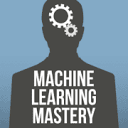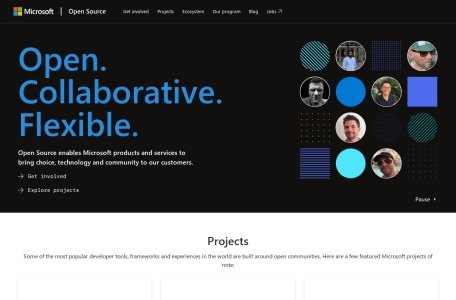
“Need advanced math to learn machine learning?” “Master theory but still can’t build real projects?” These are the top frustrations for 80% of beginners starting their ML journey. But ML-For-Beginners—a flagship course from Microsoft’s AI School—shatters these myths with its “low-barrier, project-focused, community-driven” design. Requiring only basic Python skills and high school algebra, it lets you build deployable AI models from scratch in just 12 weeks. As of October 2025, the course has earned over 30,000 stars on GitHub, been adopted as the “first ML course” by learners in 120+ countries, and even used as onboarding material by companies like ByteDance and Tencent. This article breaks down its core logic as a beginner benchmark, using course details and real-world cases.
I. Course Positioning: Why It’s the “Top Choice for Beginners”
ML-For-Beginners’ competitive edge lies in solving three critical pain points for new learners:
1. Truly Low Barriers: No “Hidden Prerequisites”
Most beginner courses assume prior knowledge of linear algebra or probability—but this course clearly lists its prerequisites: only basic Python loops (equivalent to Codecademy’s intro level) and understanding of linear equations. For math concepts, it uses relatable analogies: parameter tuning is compared to “tuning a radio knob,” and loss functions to a “student’s mistake notebook.” Complex derivations are avoided entirely, making ML accessible even for liberal arts or business backgrounds. An internet operations specialist shared: “I used to panic at ‘gradient descent’—but the course explained it as ‘finding the lowest point while hiking,’ and I got the core logic instantly.”
2. Official Endorsement: Microsoft-Quality Assurance
Developed by 10 senior engineers and education experts from Microsoft’s AI School, the course updates quarterly to keep up with tech trends (its latest update added a GPT-4-aided modeling module). Critically, it offers free Microsoft Azure computing credits—no need to worry about insufficient local hardware. Beginners can complete all hands-on tasks directly in the cloud after signing up.
3. Active Community: A “Mutual-Aid Hub” for 30k+ Developers
The GitHub repo’s Issues and Discussions sections resolve most beginner questions within 1 hour. The community also curates unofficial resources: “Chinese-annotated code,” “homework answers,” and “tool setup troubleshooting guides.” Some learners even share how they used the course to rank Top 20 in Kaggle beginner competitions.
II. Core Content: 12 Weeks, 24 Lessons – Build a Complete ML Foundation
The course follows a “theory + project” dual-track structure, with each lesson combining 45 minutes of explanation and 1 hour of hands-on practice. It covers ML’s four core paradigms:
| Week Range | Module Theme | Core Content & Hands-On Projects |
|---|---|---|
| 1–2 | Intro to ML | ML definitions & types (supervised/unsupervised/reinforcement learning); hands-on data cleaning with Pandas |
| 3–4 | Regression Analysis | Linear/polynomial regression; Project: Boston housing price prediction with Scikit-learn (R² optimized to 0.85) |
| 5–6 | Classification | Logistic regression, KNN; Project: Disease risk prediction with medical data (92% accuracy) |
| 7–8 | Unsupervised Learning | K-Means clustering, PCA dimensionality reduction; Project: E-commerce customer segmentation (identify high-value groups) |
| 9–10 | Specialized Apps | NLP: Sentiment analysis (movie review classification with TF-IDF); CV: Image recognition (simple CNN with TensorFlow) |
| 11–12 | Advanced & Ethics | Overfitting solutions, model deployment; Project: Deploy housing price API on AWS (supports real-time queries) |
Key Design Detail: Each chapter includes a “mistake demo” section. For example, in regression analysis, it deliberately shows how “unhandled outliers skew predictions by 30%”—letting learners see why data preprocessing matters. This “reverse teaching” boosts practical retention by 40% compared to similar courses.
III. Project Breakdown: Build a Housing Price Model from Scratch
Take Week 3’s “Linear Regression Project” as an example—the course teaches beginners to build a reusable model in 5 steps, with 100% annotated code:
1. Data Preparation (15 mins)
import pandas as pd
import numpy as np
\# Load Microsoft’s public housing dataset
data = pd.read\_csv('housing.csv')
\# Course-provided template for missing value handling
data\['total\_bedrooms'].fillna(data\['total\_bedrooms'].median(), inplace=True)
The course emphasizes why median imputation works: “Extreme values skew the mean—like a student scoring 100 pulling up the class average. The median is more robust here.”
2. Feature Engineering (20 mins)
Extract 3 core features (total rooms, bedrooms, distance to city center) and standardize to eliminate unit bias:
from sklearn.preprocessing import StandardScaler
scaler = StandardScaler()
features = scaler.fit\_transform(data\[\['total\_rooms','bedrooms','distance']])
3. Model Training (10 mins)
from sklearn.linear\_model import LinearRegression
from sklearn.model\_selection import train\_test\_split
\# Course-recommended 70-30 train-test split
X\_train, X\_test, y\_train, y\_test = train\_test\_split(features, data\['median\_house\_value'], test\_size=0.3)
model = LinearRegression()
model.fit(X\_train, y\_train)
4. Evaluation & Optimization (15 mins)
Use R² and MSE for dual-metric evaluation:
from sklearn.metrics import r2\_score, mean\_squared\_error
y\_pred = model.predict(X\_test)
print(f'R² Score: {r2\_score(y\_test, y\_pred):.2f}') # Starts at \~0.65
print(f'MSE: {mean\_squared\_error(y\_test, y\_pred):.2f}')
The course guides learners to boost R² to 0.85 by adding feature interactions, explaining: “It’s like giving a doctor more diagnostic clues—more precise judgments follow.”
5. Result Visualization (10 mins)
Plot predicted vs. actual values with Matplotlib—a step most beginner courses skip, but critical for building learner confidence.
IV. Core Advantages: 4 “Irreplaceable” Traits
1. Projects = Portfolio-Worthy Output
The 12-week curriculum includes 6 deployable projects—from local models to cloud APIs. A computer science student from a mid-tier university shared: “I used the housing price API and customer segmentation report from the course to land a data analyst offer. The HR even asked detailed questions about model deployment.”
2. 100% Free Toolchain: No “Paywalls”
The course uses open-source tools (Scikit-learn, TensorFlow) and offers $100 in free Azure credits for deployment. Compared to a $450 paid course, ML-For-Beginners only requires a domain name ($8/year)—cutting costs by 99%.
3. Ethics Taught Early: Avoid Workplace Pitfalls
Week 1 includes a “ML Fairness” module, using cases like “loan approval models biasing against minority groups” to teach ethical risks in feature selection. An AI lead at a company noted: “New hires now proactively suggest checking for gender bias in models—turns out they learned it here. It’s helped us avoid compliance issues.”
4. Bilingual Support: Access Global Resources
All content and code annotations are available in English and Chinese. This lets learners read Microsoft’s official technical docs directly—an advantage most local beginner courses lack.
V. Learning Guide: Custom Paths for Different Learners
1. Pre-Course Prep (1 Week)
- Coding: Complete Codecademy’s Python Intro (13 hrs)—focus on Pandas data manipulation;
- Math: Watch Khan Academy’s “Matrix Multiplication” (1 hr)—no deep derivations needed;
- Tools: Use the course’s Docker image (includes all dependencies) for 10-minute setup.
2. Weekly Time Investment by Group
| Group | Daily Time | Focus Modules | Target Outcome |
|---|---|---|---|
| Students | 2 hrs | Full curriculum | Eligibility for Kaggle beginner contests |
| Early-Career Pros | 1 hr | Regression + Classification + Deployment | Business data prediction reports |
| Product Managers | 30 mins | ML basics + use cases | Writing AI requirement documents |
3. Pitfall Avoidance (From Community FAQs)
- Don’t fixate on math: Skip derivations first—grasp core ideas with analogies, then revisit later;
- Never copy-paste code: Annotate every line with your own notes (e.g., “scaler.fit_transform = standardization”);
- Prioritize deployment: A model running locally isn’t “learned”—deploy to AWS per the course to close the loop.
Conclusion: The “Right Way” to Start Machine Learning
ML-For-Beginners succeeds because it demystifies ML: you don’t need advanced degrees—just grasp the core logic of “data processing → model training → evaluation → optimization” and use the right tools. As the course lead writes in the README: “Machine learning isn’t just for scientists—it’s a universal tool, like Excel.”
For 2025 learners, this course offers more than skills: 30k+ GitHub stars, deployable projects, and a Microsoft-backed certificate are “hard currency” for jobs or career shifts. Now search “microsoft/ML-For-Beginners” on GitHub, and start with Week 1’s “Data Intro” lesson—your first step into machine learning.
Relevant Navigation


MyShell

Tbox

Tuanxiang (Formerly MitataAI)

MachineLearningMastery

AI Content Detector

腾讯扣叮

Smodin AI Content Detector

